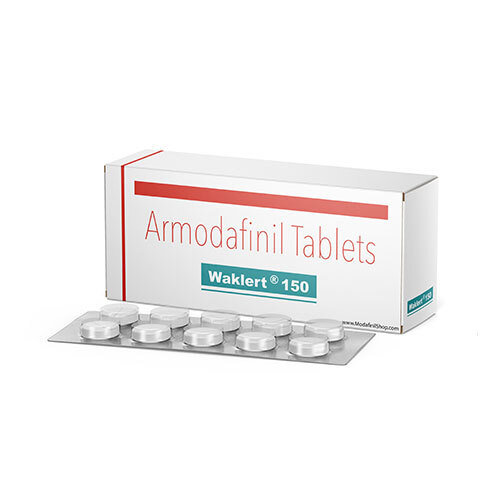Does Modafinil Cause Tolerance? Signs, Risks, and How to Manage It
Modafinil is widely prescribed to improve alertness and reduce excessive daytime sleepiness in conditions such as narcolepsy, obstructive sleep apnea, and shift work disorder (U.S. Food and Drug Administration [FDA], 2015). While many patients benefit from its wakefulness-promoting effects, some notice that the medication becomes less effective over time — raising the question of tolerance.
Understanding whether modafinil truly causes tolerance, what factors influence it, and how it can be managed is critical for long-term safe and effective use.
What Is Modafinil Tolerance?
Tolerance occurs when the body adapts to a drug, reducing its effectiveness at the same dose. With modafinil, this can mean patients experience less wakefulness promotion despite consistent use.
Unlike traditional stimulants, modafinil has a unique mechanism involving multiple neurotransmitter systems, including dopamine, histamine, and orexin pathways (Greenblatt & Adams, 2023). Because of this, its tolerance profile may be different and less predictable than drugs like amphetamines or methylphenidate.
Mechanisms of Tolerance: What We Know and Don’t Know
Research suggests two possible pathways:
1. Pharmacodynamic (cellular-level)
- The body may reduce receptor sensitivity over time, making modafinil less effective.
- This is hypothesized but not conclusively proven in humans.
2. Pharmacokinetic (metabolic-level)
- The liver may become more efficient at breaking down modafinil, shortening its duration of action (Greenblatt & Adams, 2023).
- The FDA label notes dose-dependent side effects but not well-defined tolerance patterns (FDA, 2015).
Important note: Clinical studies are limited, and tolerance in modafinil remains less documented than with classic stimulants.
Risk Factors for Developing Tolerance
Certain factors may increase the likelihood of tolerance:
- High or escalating doses (especially above 400 mg/day, which shows no added benefit in trials) (FDA, 2015).
- Prolonged continuous use without breaks.
- Individual variation, including metabolism, genetics, and comorbid conditions.
- Use outside approved indications, such as cognitive enhancement in healthy individuals.
Recognizing Signs of Modafinil Tolerance
Possible indicators include:
- Decreased wakefulness or alertness despite consistent dosing.
- Needing to increase the dose for the same effect.
- Shorter duration of effect compared to initial use.
However, not all patients will develop these signs. In one long-term chart review, many patients maintained stable benefit for years without evidence of tolerance or abuse (Nasr et al., 2006).
Managing and Preventing Tolerance
1. Dose Management
- Stick to prescribed doses (200 mg/day is standard; up to 400 mg/day may be tolerated but shows little added benefit) (FDA, 2015).
2. Drug Holidays & Cycling
- Some clinicians recommend short breaks from modafinil.
- A recent study tested weekend “drug holidays” bridged with pitolisant and found reduced tolerance symptoms, lower required modafinil doses, and improved daytime sleepiness (Winter et al., 2023).
3. Medical Supervision
- Regular check-ins with a healthcare provider are essential.
- Monitoring includes evaluating sleepiness levels, cardiovascular health, and psychiatric symptoms (FDA, 2015).
4. Alternatives
- Other wake-promoting medications (pitolisant, solriamfetol) may be considered if tolerance develops.
Misuse, Dependence, and Overdose Risks
While modafinil has a lower abuse potential than amphetamines, it is still a Schedule IV controlled substance (FDA, 2015).
- Misuse may involve taking higher or more frequent doses without medical supervision.
- Dependence is rare but possible, especially in those with a history of substance abuse.
- Overdose symptoms can include agitation, insomnia, anxiety, hypertension, and rapid heartbeat (FDA, 2015).
Clinical data suggest that tolerance and abuse are not common in medical settings, but caution remains important (Nasr et al., 2006).
Conclusion
So, does modafinil cause tolerance? The answer is sometimes — it can occur, especially with higher or prolonged dosing, but is not universal. Current evidence suggests that tolerance is less predictable and less severe than with other stimulants.
By recognizing risk factors, monitoring for signs, and working closely with a healthcare provider, patients can maximize the long-term benefits of modafinil while minimizing risks.
References
- U.S. Food and Drug Administration. (2015). PROVIGIL® (modafinil) tablets, for oral use, C-IV [prescribing information]. U.S. Department of Health and Human Services. https://www.accessdata.fda.gov/drugsatfda_docs/label/2015/020717s037s038lbl.pdf
- Greenblatt, K., & Adams, N. (2023). Modafinil. In StatPearls [Internet]. StatPearls Publishing. https://www.ncbi.nlm.nih.gov/books/NBK531476/
- Nasr, S., Wendt, B., & Steiner, K. (2006). Absence of mood switch with and tolerance to modafinil: A replication study from a large private practice. Journal of Affective Disorders, 95(1–3), 111–114. https://doi.org/10.1016/j.jad.2006.01.010
- Winter, Y., Lang, C., Kallweit, U., Apel, D., Fleischer, V., Ellwardt, E., & Groppa, S. (2023). Pitolisant-supported bridging during drug holidays to deal with tolerance to modafinil in patients with narcolepsy. Sleep Medicine, 112, 116–121. https://doi.org/10.1016/j.sleep.2023.10.005








